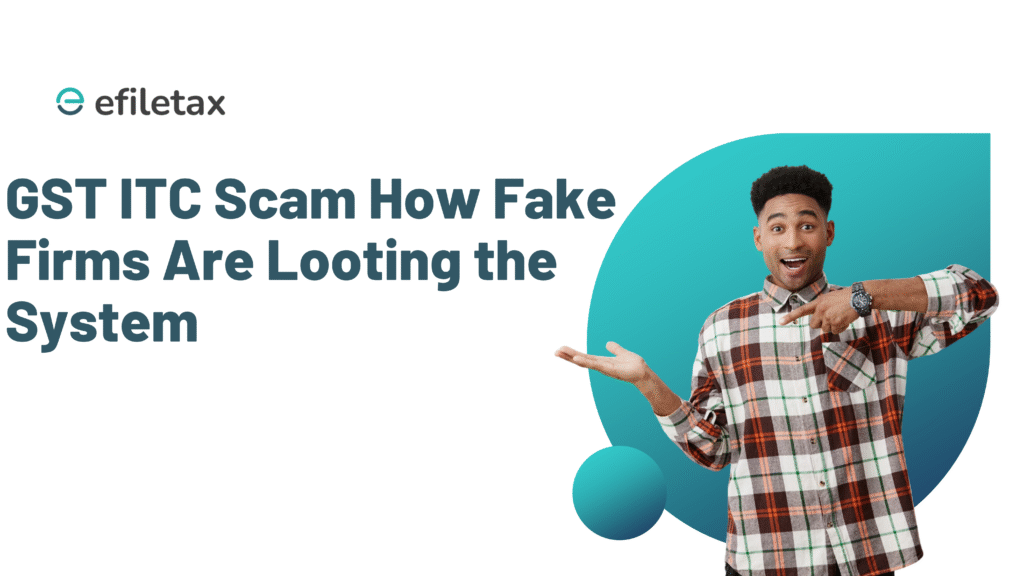
GST ITC Fraud in Hyderabad: What the ₹6.25 Cr Scam Reveals
A recent GST ITC fraud in Hyderabad has once again put the spotlight on how fraudsters exploit systemic loopholes to siphon off public money. In this case, the Telangana Commercial Taxes Department unearthed a fake billing racket run under the name “Bala Corporation”, a toy trading firm that existed only on paper. The fraud? A whopping ₹6.25 crore in input tax credit (ITC), passed on to 32 entities.
Let’s break this down in plain terms—and more importantly, what it means for honest taxpayers and GST-registered businesses.
How the ₹6.25 Cr ITC Fraud Happened
Here’s what the investigators found:
- Fake GST registration: Bala Corporation was registered at a fake address in Somajiguda, Hyderabad.
- Bogus documents: The entity submitted forged invoices to claim ITC.
- No real purchases: There were no actual inward supplies. It was a pure paper trail.
Legal Provisions Violated
The scam violates key provisions of the CGST Act, 2017:
| Section | Legal Breach |
|---|---|
| Sec 16 | Wrongful claim of ITC without receipt of goods/services |
| Sec 122 | Penalty for issuing fake invoices |
| Sec 132 | Punishable offence for fraudulently availing ITC |
Why This Happens: Systemic Loopholes in GST
A 2023 NIPFP study estimated that India loses ₹1.5 lakh crore annually to GST evasion, majorly via ITC fraud. The loopholes exploited include:
- Self-declared ITC mechanism (GSTR-3B allows credit without matching invoice data)
- Slow enforcement: Lack of real-time data validation
- Ease of setting up bogus firms: Aadhaar-based registration still has gaps in physical verification
- Poor integration between states
Expert View: Can Tech Stop ITC Fraud?
According to tax technology consultants, blockchain integration could be a game changer. A 2024 pilot in Gujarat, using blockchain for e-invoice validation, reduced ITC mismatches by 30% in just six months.
Proactive measures needed:
- Real-time PAN–GSTIN verification
- AI-based anomaly detection (especially in GSTR-1 and GSTR-3B mismatches)
- GSTIN risk profiling for high ITC pass-through
- Quarterly physical verification audits
What Taxpayers Should Learn from This
If you’re receiving ITC from any vendor, ensure:
✅ GSTIN is valid and active (check on gst.gov.in)
✅ Supplier has filed GSTR-1 and 3B consistently
✅ E-invoices are genuine and match your books
✅ No sudden large ITC from newly registered or low-turnover firms
If you knowingly or unknowingly avail fake ITC, you’ll be liable under Section 122—even if the fraud was by your supplier.
Efiletax Expert Tip
Always run a quarterly ITC health check using GSTR-2B reconciliation. If you’re unsure about a vendor, flag them early. We at Efiletax help our clients set up smart workflows to avoid getting caught in someone else’s fraud.
FAQ on GST ITC Fraud
Q1. What is fake ITC under GST?
Fake ITC refers to claiming input tax credit without actual supply of goods or services, usually via bogus invoices.
Q2. Is the buyer responsible if the supplier is fake?
Yes, under Section 16, ITC is allowed only if supply is received. If the supplier is bogus, the buyer’s ITC is disallowed and penalty may apply.
Q3. Can GSTIN be cancelled retroactively?
Yes, as per Rule 21 of CGST Rules, if registration was obtained fraudulently, cancellation can be with retrospective effect.
Final Word
The GST ITC fraud in Hyderabad is a wake-up call for businesses. With authorities cracking down, the risk of blindly accepting ITC is too high. Build robust vendor vetting processes, reconcile your returns, and avoid shortcuts.
Want help setting up smart GST compliance systems?
👉 Talk to Efiletax – India’s trusted GST filing partner.
Summary
A fake firm in Hyderabad claimed ₹6.25 crore in GST input tax credit via bogus invoices. This ITC fraud highlights critical loopholes in GST enforcement. Learn how the scam worked, what laws it violated, and how businesses can avoid falling into the fake ITC trap.